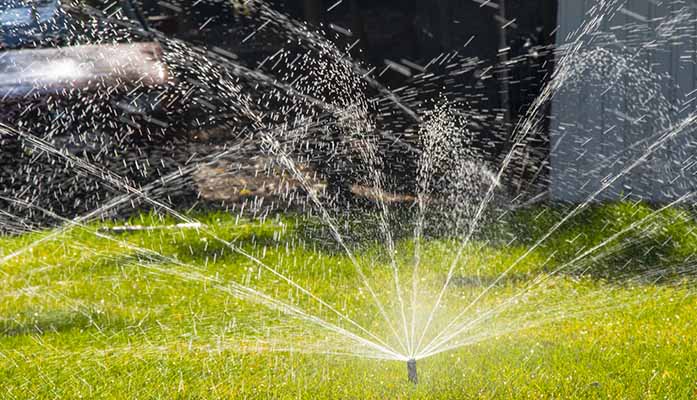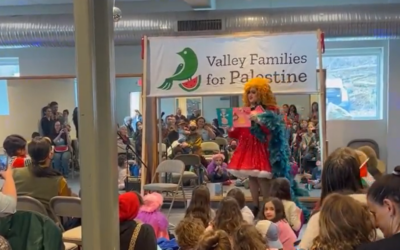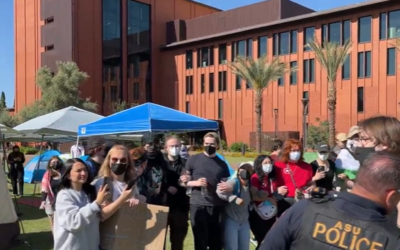By Corinne Murdock |
More of Arizona’s municipalities are increasing their water conservation efforts, leading taxpayers to pay more for less.
Preexisting sustainability goals and the burgeoning Colorado River drought have offered justification for these municipalities’ efforts, which have now resulted in lawn bans, increased water rates, and restricted water usage over the last few years.
Multiple cities recently traded in their Colorado River water rights in exchange for federal funding: Tucson, Phoenix, Peoria, Glendale, Scottsdale, Gilbert, Mesa, Surprise, Queen Creek, along with the state, Apache Junction Domestic Water Improvement District, Central Arizona Groundwater Replenishment District, Metropolitan Domestic Water Improvement District in Tucson, Salt River Project, and EPCOR.
Last month, Gov. Katie Hobbs announced the Arizona Department of Water Resources (ADWR) ban on the construction of new Phoenix homes that would rely on groundwater.
These progressive restrictions and charges also continue despite noted successes in conservation in comparison to past years with smaller populations.
The answer may lie with other developments in the state over the years. Big Tech’s data centers may be one of the major drains on water supply outweighing the net savings of residents’ water conservation efforts.
Mesa
In comparison to the other cities, Mesa doesn’t impose major water conservation restrictions. It does offer $1,000 in rebates for grass removal, with an additional $100 maximum for planting native trees.
However, the city may be contributing to the water burdens faced by its neighbors. In 2019, it approved the development of a data center for Google that could use one to four million gallons of water daily. Arizona residents average about 146 gallons daily currently.
Yet, as Time pointed out, Arizona Municipal Water Users Association (AMUA) — an organization that Mesa helped found — chastised Arizona residents several weeks after the deal between Mesa and Google for using 120 gallons on average daily.
Meta (formerly Facebook, which also owns Instagram) is now building a data center there as well. The year they broke ground in Arizona, they promised to be “water positive” — meaning, restoring more water than they consume — by 2030.
Like Google centers, data centers could use around one to five million gallons of water a day according to Texas Tech University’s Water Resources Center director, Venkatesh Uddameri.
Microsoft also operates data centers out of El Mirage and Goodyear. They made the same promise to be water positive by 2030.
Over 30 percent of the world’s data centers are located in the U.S.
Scottsdale
Scottsdale banned lawns on new builds earlier this month.
The city also offers to pay residents up to $5,000 for lawn removals, and up to $1 per square foot of water surface area plus $400 for pool or spa removals. For multifamily properties, homeowner associations (HOAs), and commercial businesses, the city offered up to $40,000 to remove their lawns, with an additional $10,000 bonus for grass strips adjacent to streets.
Since Scottsdale launched its rebate program in 1992, total rebates amounted to over $4.7 million; about half of which came from grass removals. The city has removed 94 acres of grass since the program’s launch. This fiscal year’s rebate budget sits at $450,000.
Last September, Scottsdale banned HOAs from requiring overseeding lawns.
Residents surpassed the city’s goal of 10 percent water conservation, achieving 12 percent over the last two years.
Tucson
Last month, Tucson banned lawns and reduced water flow in new constructions. The city also required all new residential dwelling units to include piping for a separate discharge of gray water for direct irrigation: the untreated, leftover water from washing machines, bathtubs, and sinks.
In 2008, Tucson required all commercial development and site plans to include a rainwater harvesting plan that provided for 50 percent of the annual landscape water supply.
In 2014, Tucson passed a water waste ordinance fining individuals $250 on the first offense and $500 on subsequent offenses up to $2,500 for allowing water to escape or pool onto public property; washing driveways, sidewalks, parking areas with a hose (unless a residential customer); operating a misting system in unoccupied non-residential areas; having an irrigation head or emitter that’s broken or spraying more than 10 percent onto a street, parking lot, or sidewalk; failing to control a leak; and failing to meet the 50 percent rainwater harvesting requirement for landscape irrigation.
Tucson also offers multiple rebates: $100 per residential, multi-family, or commercial premium high-efficiency toilet; $150 for a flushometer valve/bowl combination; $200 for high-efficiency or water-free urinal installation; $100 or $200 for a residential high-efficiency clothes washer; up to $2,000 for a residential rainwater harvesting system; and up to $1,000 for a gray water system. The city also offers special incentives for low-income residents: free high-efficiency toilets, grants up to $1,000 and loans up to $2,000 for a rainwater harvesting system, grants and loans up to $500 for a gray water harvesting system, discounted high-efficiency clothes washers, and free plumbing repairs.
Each year, Tucson makes available up to $250,000 in grant money to establish stormwater harvesting in neighborhoods.
Phoenix
Last month, the Phoenix City Council approved the Sustainable Desert Development Policy, requiring rezoning cases on new developments to satisfy city-approved standards on EPA WaterSense efficiency certifications; drought tolerant and/or native landscaping; restrictions on turf usage; outdoor irrigation efficiency standards; green infrastructure or low-impact development provisions for surface parking areas, streets, and sidewalks; participation in the city’s Efficiency Checkup program; new swimming pool standards; new wet-cooling system standards; and preservation of natural open spaces.
Additionally, the policy will require any entities that use over 250,000 gallons of water per day to submit a water conservation plan, approved by city staff. Any entities that use over 500,000 gallons of water per day must derive 30 percent of their water consumption from a recycled or conserved water source.
Entities dubbed “large water users,” may be denied operation even if their conservation plan is acceptable to the city. The policy stated that the city may reject the large water user if there’s inadequate water resource availability in their proposed location, inconsistency with the city’s planning documents; undesirable economic value and impact of their proposed water use; undesirable impact to water rates; or incompatibility with the city’s definition of a key industry beneficial to the economy.
The city doesn’t offer any rebate programs, though last December city officials expressed a desire to launch one to incentivize lawn removals. The city signed a joint pledge between locales in California and Nevada to remove ornamental turf.
The city also imposes an ordinance onto new developers, the Water Resources Acquisition Fee (WRAF) ordinance, which may be mitigated via credit if the developer provides a permanent reduction in annual water demand on the city.
The city has promised that it won’t institute mandatory water use restrictions in the near future, though it warned that severe or worsening drought conditions within the next 10-15 years may warrant such restrictions. Policy changes could include water waste punishments similar to Tucson’s, requiring child safe pool covers to reduce evaporation, banning turf irrigation, and banning car washing.
Flagstaff
Flagstaff has stricter water use requirements than some of the other Arizona cities.
The city has a watering allowance schedule during which residents may water their landscape: even-numbered addresses on Sundays, Wednesdays, and Fridays, and odd-numbered addresses on Tuesdays, Thursdays, and Saturdays. Nobody may water on Mondays, and the city prohibits watering between 9 am and 5 pm. Gardeners wishing to water by hand — “incidental hand watering” — may do so on any day, except from 9 am to 5 pm. However, vehicle washing is not subject to the water schedule restrictions.
The schedule is only permitted to be used when the city is at the first stages of burdened water demand. At level two, the city bans irrigation; car washing at home; driveway, sidewalk, and tennis court washing; filling of fountains, ponds, streams, or pools over 100 gallons. The city also increases water rates for those using over 6,400 gallons, and potable standpipe rates increase by 130 percent. At level three, potable water use is banned outside.
Those who violate the rules within any of the three levels are subject to fines starting at $25, doubling with each violation.
The city implements a diverse set of rebate programs. Commercial properties may receive free high-efficiency sink aerators, free high-efficiency shower heads, free pre-rinse spray valves, $86 rebate or 50 percent of project cost for commercial toilets, $158 or 50 percent of project cost for hotel toilets; and $157 or 50 percent of the project cost for commercial urinals.
Both residential and commercial properties may receive a rebate at 25 cents per square foot for converting to low-water landscaping. They may also receive a $100 rebate on installation of a rainwater harvesting system with 1000-gallon minimum capacity, and free 55-gallon rainwater harvesting barrels.
The city reported that their conservation efforts, beginning in 1988, have yielded a 50 percent water use reduction.
Gilbert
The town of Gilbert is offering up to $800 to residents and up to $3,000 to non-residential customers who swap their lawns for desert landscaping that uses less water. The city set aside $60,000 for the residential program, and $15,000 for the non-residential program.
A Gilbert spokesperson told AZ Free News that they have a total of $120,000 per year to issue on their rebate programs, and that the allocated funding within that budget may change from year to year based on the popularity of each program.
Anyone who receives $600 or more in water bill credits must complete a W9 for the Gilbert Water Conservation, as per the Biden administration IRS reporting requirement enacted last year.
Those aren’t the only water conservation financial incentives that Gilbert has offered. The town introduced rebates up to $250 for residential, $400 for non-residential properties to install smart irrigation controllers.
In May, the town applied for a $3 million grant from the Water Conservation Fund to replace grass on government property with desert-tolerant landscaping. The grant money ultimately comes from federal COVID-19 relief funds.
Gilbert announced that it saved 254 million gallons due to its conservation efforts in 2019, and 375 million in 2018.
Corinne Murdock is a reporter for AZ Free News. Follow her latest on Twitter, or email tips to corinne@azfreenews.com.








